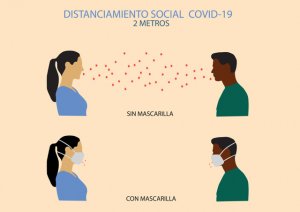 Due to poor planning, incompetency, ignored warnings, and political maneuvering, the virus got a major hold on the world’s population. It wasn’t nipped in the bud or addressed in time. The result has been the overwhelming of medical facilities New York, Spain, and Italy. Once they become overwhelmed, they are no longer available for other medical needs. So the implications of reduced or non-existent health care is compounded. Simply, by blunting the curve, that’s what we are trying to do now – keep the hospitals’ doors open.
Due to poor planning, incompetency, ignored warnings, and political maneuvering, the virus got a major hold on the world’s population. It wasn’t nipped in the bud or addressed in time. The result has been the overwhelming of medical facilities New York, Spain, and Italy. Once they become overwhelmed, they are no longer available for other medical needs. So the implications of reduced or non-existent health care is compounded. Simply, by blunting the curve, that’s what we are trying to do now – keep the hospitals’ doors open.
The virus will still continue to infect until everybody has had it (and has the still-unproven effective antibodies) or, we get a workable vaccine (still a year off if at all). Both will take a lot longer than people and businesses can shelter in place.
So we are faced with how to get back to work without breathing on each other. Since the droplets that contain the virus are invisible, too many will not take masking and social distancing seriously and there will be wave after wave of infections that will impact our hospitals. Businesses will open and close again and again until the population does take it seriously.
Masking is not a political statement. It is a humanitarian statement. It says, “I will protect you from my airborne droplets. Won’t you do the same for me?” Basically, folks who do not wear masks either don’t believe they are spewing droplets that others can inhale, or they are saying, “I don’t care about your health,” and the self-defeating corollary, “I don’t care if I can’t get into a hospital when I need to.”
Now we are down to how to conduct business without customers or patrons spewing or inhaling droplets. According to Erin Bromage, a comparative immunologist and professor of Biology (specializing in Immunology) at the University of Massachusetts Dartmouth:
- “A single breath releases 50 – 5,000 droplets. Most of these droplets are low velocity and fall to the ground quickly,” but “A single sneeze releases about 30,000 droplets, with droplets traveling at up to 200 miles per hour. Most droplets are small and travel great distances (easily across a room).”
- “Speaking increases the release of respiratory droplets about 10 fold; ~200 copies of virus per minute. Again, assuming every virus is inhaled, it would take ~5 minutes of speaking face-to-face to receive the required dose.”
How much is the required dose?
- “In order to get infected you need to get exposed to an infectious dose of the virus; based on infectious dose studies with MERS and SARS (and this one), some estimate that as few as 1000 SARS-CoV2 viral particles are needed for an infection to take hold. Please note, this still needs to be determined experimentally, but we can use that number to demonstrate how infection can occur.”
- “Infection could occur, through 1000 viral particles you receive in one breath or from one eye-rub, or 100 viral particles inhaled with each breath over 10 breaths, or 10 viral particles with 100 breaths. Each of these situations can lead to an infection.”
In other words, “Successful Infection = Exposure to Virus x Time.”
Basically this is a prescription for not talking to anyone without masks, keeping social distancing, and if you have to be in an enclosed area where others are present, wear a mask, demand that the retailer or manager makes everyone else do the same, don’t touch your face and wash your hands – a lot!
He points out that most cases are coming from groups who live together where one member has been exposed. He says that most carriers show no symptoms and are the major transmitters.
We highly recommend you read Erin’s post and apply the suggestions.
The obvious implications are stay outside as much as possible with fresh moving air. The question is, “How can businesses achieve that inside?”
He believes the odds are greater for contraction in a room that has traffic over time without adequate ventilation.
Erin’s article gives us some behavioral and architectural parameters that may reduce the increased risk everyone is about ready to take! He also says, “If you don’t solve the biology, the economy won’t recover.”
So, whether you are more concerned about your health or your paycheck, you still have to take the same practical measures. We all do. “We are all in this together,” is more than an apropos saying: it is a reality we are experiencing worldwide now, and quite possibly, for the foreseeable future.


